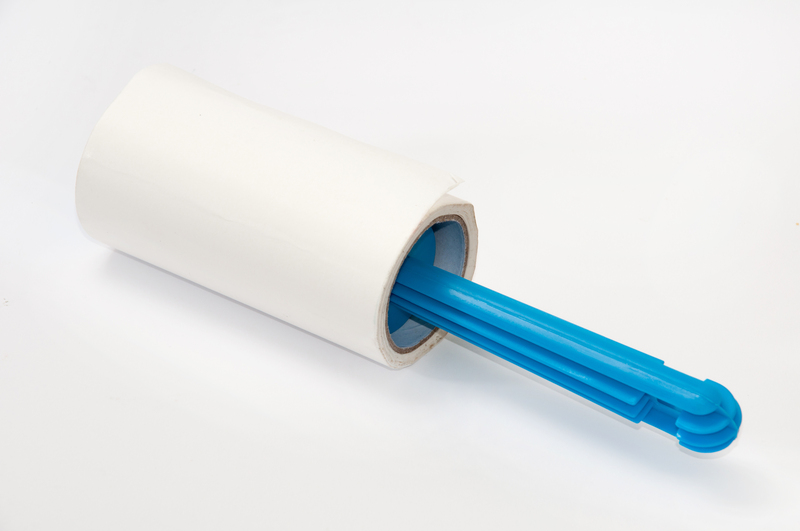Air Quality: The Silent Partner of Well-being in Buildings
Posted on 20/09/2025
Air Quality: The Silent Partner of Well-being in Buildings
In today's rapidly urbanizing world, buildings are much more than just four walls and a roof--they are ecosystems that heavily impact our health and well-being. Whether it's our homes, offices, or public spaces, the quality of the air we breathe indoors plays a critical, albeit often overlooked, role in shaping our physical and mental state. In this comprehensive guide, we will explore the manifold layers of air quality in buildings, how it influences wellness, and what steps we can take to make our indoor environments healthier.

Understanding Air Quality in Indoor Environments
Air quality within buildings is not just about pleasant breezes or odors; it involves a complex interplay of factors that determine the concentration of pollutants, allergens, and other substances in the air we inhale. Most people spend up to 90% of their lives indoors, according to studies by the Environmental Protection Agency (EPA). This staggering statistic underscores the importance of maintaining optimal air quality inside buildings where we live, work, and play.
Defining Air Quality Indoors
- Particulate Matter (PM2.5 and PM10): Tiny particles suspended in the air, such as dust, pollen, soot, and smoke, which can penetrate deep into the respiratory system.
- Volatile Organic Compounds (VOCs): Chemicals released by building materials, paints, cleaning agents, and even office equipment like printers.
- Carbon Dioxide (CO2): A natural byproduct of breathing that, when allowed to accumulate, can lead to feelings of drowsiness or impaired cognition.
- Humidity and Temperature: Excess humidity can encourage the growth of mold and dust mites, while dry air can cause irritation to eyes, skin, and respiratory passages.
- Biological Contaminants: Bacteria, viruses, molds, and pet dander are ubiquitous and can trigger allergies or spread illness.
Why Air Quality Matters for Well-being
Often described as the silent partner of human health, indoor air quality has wide-reaching consequences that span across physical, cognitive, and emotional domains. Let's delve into the ways it impacts our lives:
Physical Health Effects
- Respiratory Issues: Poor air quality can exacerbate asthma, bronchitis, and other chronic respiratory diseases.
- Allergic Reactions: Pollens, dust mites, and molds are common triggers for allergies and can lead to discomfort or illness.
- Long-term Risks: Prolonged exposure to indoor air pollutants can increase the risk of lung cancer, cardiovascular diseases, and chronic obstructive pulmonary disease (COPD).
Cognitive and Emotional Well-being
- Concentration and Productivity: Elevated levels of CO2 or VOCs have been shown to impair cognitive function, reduce attention span, and lower productivity--especially vital in workplaces and schools.
- Mood and Comfort: Poor air quality can make occupants feel tired, irritable, or unwell, negatively impacting mood and overall life satisfaction.
Main Causes of Poor Air Quality Indoors
To address indoor air quality, it's crucial to understand where pollutants originate. These sources can be classified into the following categories:
- Chemical Sources: Cleaning products, paints, sealants, adhesives, pesticides, and even some office furniture can emit volatile organic compounds and other harmful chemicals.
- Biological Sources: Mold, bacteria, viruses, and allergens like dust mites or pet fur often thrive in damp or poorly maintained indoor environments.
- Physical Sources: Particulate matter from smoking, outdoor pollution infiltrating through windows or ventilation, and dust from building materials.
- Poor Ventilation: A lack of adequate air exchange causes pollutants to accumulate and stagnate, leading to deteriorated building air quality.
Building age, building materials, occupancy levels, and location all contribute to the overall air quality profile of a space. Recognizing these risk factors is the first step toward a healthier indoor environment.
Evaluating Indoor Air Quality: Tools and Methods
To improve air quality in buildings, one must first be able to measure and understand it. Various tools and techniques can be used for effective assessment:
- Air Quality Monitors: These devices detect and measure the concentration of particulate matter, carbon dioxide, humidity, temperature, and VOCs in real-time.
- Professional Testing: Certified professionals can conduct in-depth indoor air quality testing to identify hidden dangers such as mold or formaldehyde.
- Visual and Olfactory Inspection: Musty smells, visibility of mold spores, or excessive dust accumulation can be early warning signs.
Standard guidelines for air quality, such as those from the World Health Organization (WHO) and ASHRAE, provide benchmarks to verify if a building's indoor environment meets health safety criteria.
Strategies to Improve Air Quality in Buildings
A holistic approach to enhancing indoor building air quality includes a mixture of design, technological, and behavioral solutions. Here are proven strategies:
1. Proper Ventilation Systems
- Natural Ventilation: Opening windows and vents when weather permits can help dilute indoor pollutants with cleaner outside air.
- Mechanical Ventilation: High-efficiency energy recovery ventilators (ERVs) and heat recovery ventilators (HRVs) can continuously exchange stale indoor air for fresh filtered outdoor air.
2. Filtration and Air Cleaning
- High-Efficiency Filters: Use of HEPA filters in HVAC systems captures fine particles and allergens effectively.
- Air Purifiers: Standalone units with multiple stages of filtration--such as HEPA and activated carbon--can further reduce indoor pollutants, especially in high-occupancy areas.
- UV-C Technology: Some advanced systems incorporate UV light to destroy bacteria and viruses, adding an extra layer of protection.
3. Source Control
- Choosing Low-Emission Materials: Opt for building and furnishing materials certified as low-VOC or non-toxic.
- Proper Storage of Chemicals: Keep cleaning and maintenance chemicals properly sealed and stored away from occupied spaces.
4. Regular Maintenance and Cleaning
- HVAC System Checks: Regularly inspect and maintain heating, ventilation, and air conditioning systems to ensure they function optimally.
- Cleaning Protocols: Adopt cleaning routines that minimize the use of harsh chemicals while effectively removing dust and allergens.
- Mold and Pest Management: Promptly fix leaks and damp areas to prevent mold growth and control pests, both of which impact indoor air quality.
5. Indoor Plants and Natural Solutions
- Air-Purifying Plants: Certain plants, such as spider plants, snake plants, and peace lilies, can absorb VOCs and improve humidity levels naturally.
- Green Walls: Vertical gardens add aesthetic value while contributing to a healthier atmosphere by filtering air.
The Role of Smart Technology in Building Air Quality
With the advent of smart building technology, it has become easier to monitor, manage, and improve indoor air quality automatically. Here's how innovation is driving healthier spaces:
- Smart Sensors: Integrated sensors can continuously monitor air pollutants and automatically activate ventilation or filtration systems based on real-time data.
- IoT Connectivity: Internet of Things (IoT) frameworks link environmental data with building management systems for proactive adjustments and alerts.
- Occupant Feedback: Mobile apps allow occupants to report air quality issues or discomfort, ensuring facility managers can address problems promptly.
The Economic Benefits of Good Indoor Air
Investing in high-quality indoor air isn't just a matter of health--it also yields significant economic benefits for building owners, tenants, and communities:
- Improved Productivity: Research indicates that employees working in well-ventilated, clean environments perform better and have fewer sick days.
- Property Value: Buildings with robust air quality management are increasingly attractive in the real estate market, enhancing property value.
- Lower Healthcare Costs: Fewer respiratory and allergic ailments lead to reduced medical expenses for occupants and businesses.
- Energy Efficiency: Modern ventilation and filtration solutions can be designed to minimize energy consumption while maintaining optimal air quality.
Future Trends: Air Quality in Sustainable and Healthy Buildings
Growing awareness about the importance of air quality in buildings is pushing the boundaries of design and construction. The future points to "healthy buildings" where air quality is at the forefront:
- Green Building Certifications: Programs like LEED, WELL, and RESET now include stringent air quality standards as part of their assessment.
- Biophilic Design: Incorporating nature-inspired elements aims to not only beautify but also optimize indoor environmental health.
- Advanced Materials: The development of paints, textiles, and polymers that actively neutralize pollutants represents a new frontier in building materials science.
- Data-driven Management: Ongoing, real-time air quality metrics drive decision-making for building operators and architects.

Simple Tips for Occupants to Improve Personal Air Quality
- Open windows daily if possible, to refresh indoor air.
- Invest in a quality air purifier, especially if located in high-traffic or polluted urban areas.
- Use natural, non-toxic cleaning products as often as possible.
- Keep pets groomed and areas clean to reduce allergens.
- Avoid smoking indoors or burning candles and incense frequently.
Conclusion: Embracing Air Quality as a Foundation of Well-being
Air quality is truly the silent partner of well-being in buildings. While invisible, it is ever-present, shaping our health, productivity, mood, and more. In a world where we spend the majority of our time under a roof, it's imperative to reframe how we view the built environment--not just as shelter, but as a breathable, health-supporting ecosystem. By making informed choices about ventilation, filtration, material selection, and maintenance, we can ensure our buildings are sanctuaries of wellness. When it comes to indoor air quality, a proactive approach is key--because what we cannot see can most certainly affect us every single day.
Remember: Prioritizing air quality in buildings is not just a nod to comfort or convenience. It is an investment in the long-term well-being and prosperity of every occupant.




